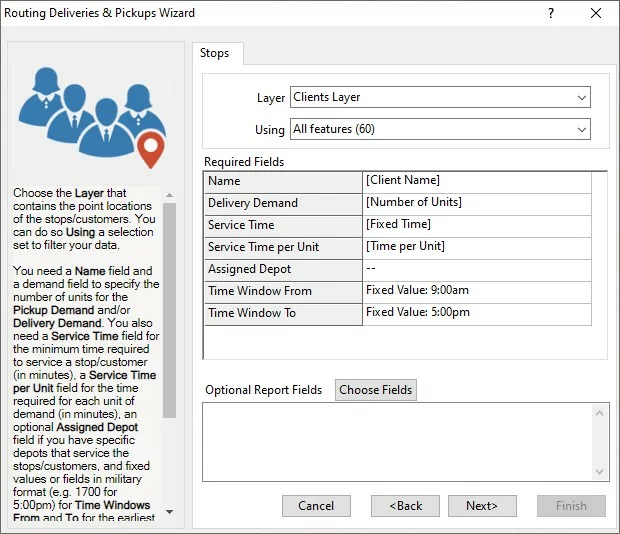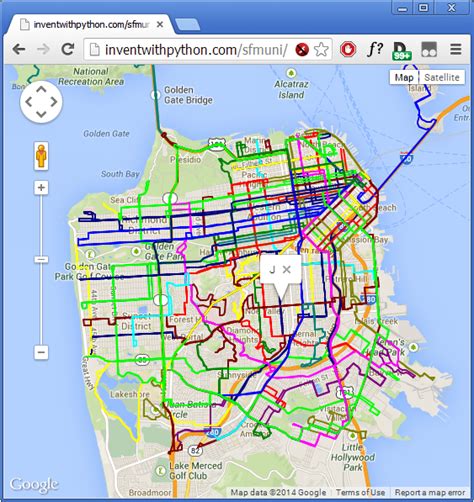Map A Route On Google Maps

Mapping Your Journey: A Comprehensive Guide to Creating Routes on Google Maps

Google Maps is an indispensable tool for navigating the world, offering a wealth of features to enhance your travel experiences. One of its most practical capabilities is the ability to map routes, providing precise directions and insights to ensure you reach your destination efficiently and confidently. In this comprehensive guide, we will delve into the intricacies of mapping routes on Google Maps, covering everything from the basics to advanced features, and offering practical tips to optimize your navigation experience.
Understanding the Basics: How to Map a Route

Mapping a route on Google Maps is a straightforward process, accessible on both desktop and mobile platforms. Here's a step-by-step guide to get you started:
Desktop Version
- Open Google Maps: Visit the Google Maps website on your preferred web browser.
- Set Your Destination: Click on the search bar at the top left corner and enter your desired location. Google Maps will automatically suggest popular destinations as you type.
- Choose Your Mode of Transport: By default, Google Maps will provide driving directions. However, you can easily switch to walking, cycling, or public transport by clicking on the corresponding icons at the top of the screen.
- Select Your Starting Point: If you wish to customize your starting location, click on the blue teardrop marker and drag it to your desired point. Alternatively, you can enter a specific address or select a recent location from the dropdown menu.
- Review Your Route: Google Maps will generate a suggested route based on your chosen transport method. The route will be highlighted on the map, and you can zoom in or out to view more details.
- Customize Your Route: If you want to avoid specific areas or add stops along the way, simply click and drag the route to adjust it as needed. Google Maps will automatically recalculate the directions.
- View Additional Information: Click on the "Directions" box to access more details about your route, including estimated travel time, distance, and expected traffic conditions.
Mobile Version
- Open the Google Maps App: Launch the Google Maps app on your smartphone.
- Set Your Destination: Tap on the search bar at the top and enter your desired location. The app will provide suggestions based on your input.
- Select Your Transport Method: Tap on the transport mode icons at the bottom of the screen to choose between driving, walking, cycling, or public transport.
- Adjust Your Starting Point: If needed, tap on the blue teardrop marker and drag it to your desired starting location. You can also use the "Current Location" option to start from where you are.
- Review and Customize Your Route: Google Maps will display a suggested route, which you can adjust by tapping and dragging the route line. The app will recalculate the directions accordingly.
- Access Additional Details: Tap on the "Directions" tab to view more information about your route, such as travel time, distance, and any potential delays.
Advanced Features: Maximizing Your Navigation Experience
Beyond the basics, Google Maps offers a range of advanced features to enhance your navigation experience and provide valuable insights for your journey.
Traffic Conditions and Alternative Routes
Google Maps provides real-time traffic information to help you avoid congestion and find the fastest route. The map will display colored lines along roads, indicating traffic conditions: green for smooth flow, yellow for moderate traffic, and red for heavy congestion. When planning your route, Google Maps will automatically suggest the quickest option based on current traffic. However, you can also explore alternative routes by clicking on the "Alternatives" button, which will present other options with their respective travel times.
Live Traffic Updates
To stay informed about changing traffic conditions during your journey, Google Maps offers live traffic updates. This feature provides real-time information about accidents, road closures, and other events that may impact your travel time. Simply enable the "Traffic" layer in the map settings to view the latest updates. Additionally, you can set alerts for specific areas to receive notifications about traffic incidents along your route.
Public Transport Timetables and Alerts
For public transport users, Google Maps provides detailed information about schedules, routes, and disruptions. When planning a public transport journey, the app will display expected arrival and departure times for each leg of your trip. You can also set alerts for specific routes or stations to receive notifications about any delays or changes.
Street View and 3D Maps
Google Maps offers a unique feature called Street View, which provides a 360-degree view of streets and locations. This can be incredibly useful when planning a route, as it allows you to virtually explore your destination and surrounding areas before you arrive. To access Street View, simply drag the yellow "Pegman" icon onto the map, and the view will shift to a 3D perspective. You can then navigate through the streets by dragging the map or using the arrow controls.
Multiple Destinations and Waypoints
If you have multiple stops along your route, Google Maps allows you to add waypoints to your journey. This feature is particularly useful for delivery drivers, sales representatives, or anyone making multiple stops. To add a waypoint, simply click on the route line and select "Add destination" or "Add stop" on the desktop version, or tap the "+" icon on the mobile app. You can then enter the address or select a recent location for your additional stop.
Customizing Your Route Preferences
Google Maps allows you to customize your route preferences based on your specific needs. You can set preferences for avoiding highways, tolls, ferries, or unpaved roads. Additionally, you can prioritize routes that are more scenic or shorter in distance. To access these preferences, click on the three dots in the top right corner of the map and select "Settings." From there, you can adjust your preferences to align with your personal travel priorities.
Tips and Tricks for Optimal Route Planning
To ensure you make the most of Google Maps' route mapping capabilities, here are some practical tips and tricks to consider:
- Explore Different Transport Modes: Depending on your destination and personal preferences, consider exploring different transport modes. For instance, if you're in a city, cycling or walking routes may offer a more enjoyable and eco-friendly experience.
- Use the "Save" Feature: If you frequently travel between certain locations, consider saving your routes for easy access later. On the desktop version, click on the three dots next to the "Directions" box and select "Save to Your Places." On the mobile app, tap the three dots in the top right corner and select "Save route."
- Utilize "Your Places": Google Maps allows you to save and organize your favorite locations, including routes, in a personalized folder called "Your Places." This feature is accessible on both desktop and mobile platforms, making it easy to plan and manage your travels.
- Share Your Route: If you're traveling with others, consider sharing your route with them. This can be done by clicking on the three dots next to the "Directions" box and selecting "Share." You can then send the route via email, text message, or social media.
- Set Your Home and Work Locations: Google Maps allows you to set your home and work addresses, providing quick access to directions and estimated travel times. To set these locations, click on the three lines in the top left corner and select "Your places." From there, you can add or edit your home and work addresses.
Future Developments and Innovations

Google Maps is constantly evolving, with new features and improvements being introduced regularly. Here's a glimpse into some of the exciting developments on the horizon:
Enhanced Augmented Reality (AR) Navigation
Google is working on expanding its AR navigation capabilities, which use your smartphone's camera to overlay directions and landmarks on the real-world view. This technology, currently in beta testing, promises to make navigation even more intuitive and accurate, particularly in complex urban environments.
Integration with Electric Vehicle (EV) Infrastructure
As the adoption of electric vehicles continues to rise, Google Maps is exploring ways to integrate EV charging station information into its routing capabilities. This would allow EV drivers to plan their journeys more efficiently, taking into account the location and availability of charging stations along their route.
Advanced Public Transport Information
Google Maps is committed to improving its public transport offerings, with plans to provide even more detailed information about schedules, disruptions, and accessibility features. This will help public transport users make more informed decisions about their journeys and ensure a smoother travel experience.
Expanded Street View Coverage
Google is continuously expanding its Street View coverage, adding more locations and improving the quality of images. This ongoing effort ensures that users have access to the most up-to-date and accurate visual representations of their destinations, making it easier to plan and visualize their journeys.
Conclusion: Navigating the World with Confidence
Google Maps has become an indispensable tool for travelers and navigators around the world, offering a wealth of features to ensure smooth and efficient journeys. From basic route mapping to advanced features like live traffic updates and Street View, Google Maps provides a comprehensive navigation experience. By understanding the basics and exploring the advanced capabilities, you can unlock the full potential of Google Maps and navigate the world with confidence.
As Google continues to innovate and improve its mapping capabilities, we can expect even more exciting developments in the future. Whether it's enhanced AR navigation, better EV integration, or more detailed public transport information, Google Maps will continue to be a trusted companion for travelers, ensuring that every journey is a smooth and enjoyable experience.
How accurate is Google Maps’ traffic information?
+Google Maps’ traffic information is incredibly accurate, as it relies on real-time data from a variety of sources, including anonymous location data from users’ devices. This data is constantly updated to provide the most current traffic conditions.
Can I save multiple routes on Google Maps?
+Yes, you can save multiple routes on Google Maps. Simply follow the steps to create a route, and then click on the three dots next to the “Directions” box and select “Save to Your Places.” You can then access and manage your saved routes from the “Your Places” section.
How often does Google Maps update its maps and information?
+Google Maps is constantly updating its maps and information to ensure accuracy and completeness. The frequency of updates can vary, but major changes and additions are often reflected within a few weeks. Street View imagery is updated periodically, with some areas receiving updates more frequently than others.
Can I use Google Maps offline?
+Yes, you can use Google Maps offline by downloading maps for specific areas. This feature is particularly useful when traveling to areas with limited or no internet connectivity. To download maps, open the Google Maps app, search for the area you want to download, and then tap on the menu button and select “Download map.”



